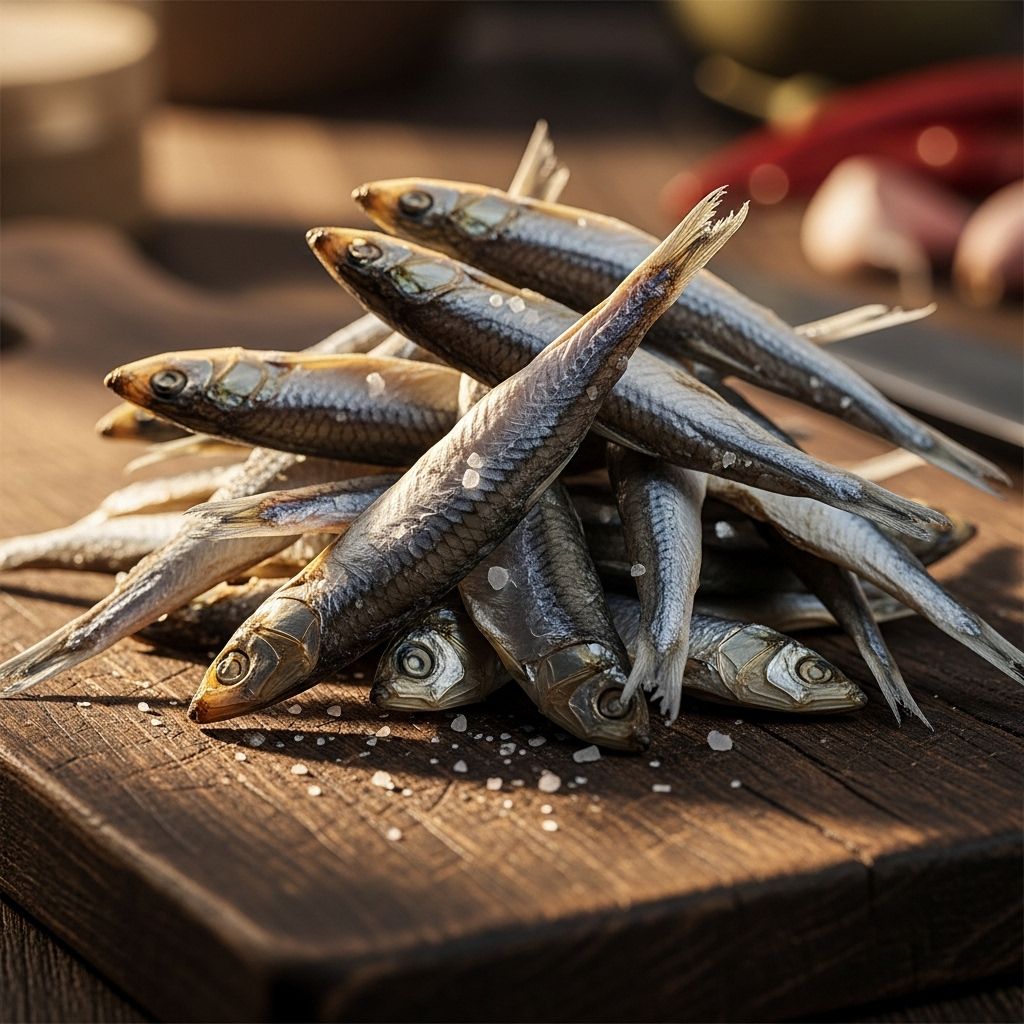The Flavor and Power of Dried Anchovies
Exploring the Nutritional Value and Culinary Delights of Dried Anchovies

Introduction to Dried Anchovies
Dried anchovies are a staple ingredient in many cuisines around the world, particularly in Asian and Mediterranean cooking. They are known for their intense umami flavor, high protein content, and versatility in various dishes. This article delves into the world of dried anchovies, exploring their benefits, uses, and how they enhance the taste of different meals.
Drying Methods and Characteristics
Dried anchovies can be processed using different methods, including sun-drying, salting followed by oven drying or mechanical drying. Sun-drying is a traditional method that retains the natural flavor and texture of the fish, while salting and drying can add a more intense flavor and longer shelf life.
Benefits and Nutritional Value of Dried Anchovies
Dried anchovies are packed with nutritional benefits:
- High Protein Content: They are an excellent source of protein, making them a popular choice for health-conscious individuals.
- Rich in Omega-3 Fatty Acids: These fatty acids help in heart health and brain function.
- Calcium Content: They are a good source of calcium, essential for bone health.
- Low in Calories: Dried anchovies are low in calories yet high in nutrients, making them an ideal snack.
Uses in Cuisine
Dried anchovies are incredibly versatile and can be used in a wide range of dishes:
- Broths and Soups: They add depth and umami flavor to stock and soups.
- Salads and Sauces: Often used in making fish sauces, anchovy paste, and dressings.
- Snacking: Can be enjoyed as a crispy snack by frying or roasting.
- Traditional Korean Dishes: Used in Korean dishes like myeolchi bokkeum (stir-fried anchovies) and gukmulyong myeolchi (anchovy broth).
Taste and Flavor of Dried Anchovies
The taste of dried anchovies is characterized by an intense umami flavor, which adds richness to dishes. They can range from slightly sweet to very salty, depending on the processing method.
Culinary Uses Around the World
Asian Cuisine
In Korean cuisine, dried anchovies are used in soup stocks and side dishes like myeolchi bokkeum. In Vietnam, they are part of the traditional dried seafood products, used in various dishes for their umami flavor.
Mediterranean and European Cuisine
In Mediterranean cuisine, anchovies are often used in salads, pasta sauces, and pizza toppings. The Italian and Spanish cuisines make extensive use of anchovies in their traditional dishes.
Frequently Asked Questions (FAQs)
Q: What is the typical size of dried anchovies?
A: Dried anchovies come in various sizes, ranging from small (less than 2 cm) to large (over 7.7 cm), depending on their intended use in cooking.
Q: How do you store dried anchovies to maintain freshness?
A: Dried anchovies should be stored in a cool, dry place to maintain freshness. They typically have a shelf life of 12 to 18 months.
Q: Are dried anchovies processed with preservatives?
A: High-quality dried anchovies are often processed without preservatives, relying on traditional sun-drying methods or salting to preserve them.
Conclusion
Dried anchovies are a valuable ingredient in many cuisines, offering a rich flavor and significant nutritional benefits. Their versatility in cooking makes them a staple in kitchens worldwide, from traditional broths to modern snacks.
References
- https://vdelta.com.vn/product/dried-anchovy/
- https://www.myfoodresearch.com/uploads/8/4/8/5/84855864/_9__fr-ictcred-011_agustini.pdf
- https://kimchimari.com/ingredient/dried-anchovies/
- https://en.wikipedia.org/wiki/Anchovies_as_food
- https://pmc.ncbi.nlm.nih.gov/articles/PMC10518830/
- https://www.fao.org/fao-who-codexalimentarius/sh-proxy/ar/?lnk=1&url=https%253A%252F%252Fworkspace.fao.org%252Fsites%252Fcodex%252FStandards%252FCXS%2B236-2003%252FCXS_236e.pdf
- https://en.wikipedia.org/wiki/Anchovy
Read full bio of medha deb












